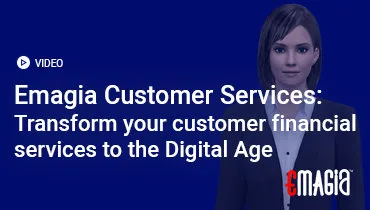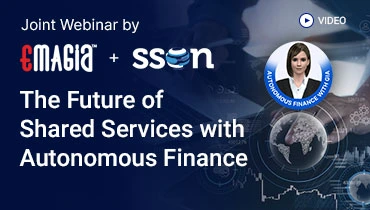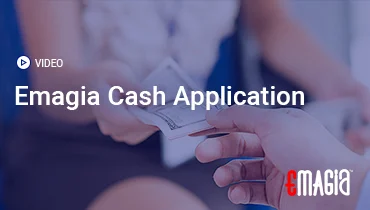Imagine making a sale, delivering your product or service, and then, weeks later, the funds are unexpectedly pulled back from your bank account. This frustrating scenario is a harsh reality for businesses operating in today’s digital economy, and it’s the very essence of a chargeback. While often seen as a customer protection mechanism, for merchants, a chargeback can feel like a sudden reversal of a completed transaction, impacting revenue, cash flow, and even reputation.
Understanding what is a chargeback is crucial for any business that accepts electronic payments, especially credit cards. It’s not merely a refund; it’s a forced reversal initiated by the cardholder’s bank, bypassing the merchant entirely. This complex process involves multiple parties and stringent rules, making it a challenging area for businesses to navigate. Unmanaged, chargebacks can accumulate rapidly, leading to significant financial losses, increased processing fees, and even the risk of losing payment processing privileges.
This comprehensive guide will demystify the concept of a chargeback, providing a clear chargeback definition and explaining the intricate steps of how do chargebacks work. We’ll delve into the common reasons behind these disputes, explore their profound impact on businesses, and outline essential strategies for both prevention and effective chargeback management. By gaining a thorough understanding of this critical financial mechanism, you can protect your hard-earned revenue and ensure the long-term stability of your operations.
Understanding the Core: What is a Chargeback?
To navigate this complex landscape, let’s start with a precise definition and clarify the fundamental meaning of this critical term.
Chargeback Definition: Unpacking the Forced Reversal
A chargeback definition refers to a transaction reversal initiated by a cardholder (customer) and processed by their issuing bank, rather than by the merchant. When a customer disputes a transaction on their credit card statement, their bank (the issuing bank) investigates the claim. If deemed valid, the bank forcibly debits the disputed amount from the merchant’s account and returns it to the cardholder. This action is distinct from a standard refund, which is initiated by the merchant. This is the essence of a chargeback what is at its core.
This mechanism serves as a consumer protection tool, allowing cardholders to reclaim funds for unauthorized transactions or when goods/services are not delivered as promised. The term charge back meaning signifies the “charging back” of funds to the merchant.
Why Chargebacks Exist: Protecting the Consumer
Chargebacks were primarily designed as a consumer protection mechanism within the payment card industry. They empower cardholders to dispute transactions and recover funds in cases of:
- Unauthorized Transactions: If a credit card is stolen or used fraudulently.
- Non-Receipt of Goods/Services: If a customer pays for an item but never receives it.
- Goods/Services Not as Described: If the item received is significantly different from what was advertised or expected.
- Billing Errors: Duplicate charges, incorrect amounts, or other processing mistakes.
This safety net builds consumer trust in using electronic payments, but it places a significant burden on merchants. Understanding what is the meaning of chargeback from both consumer and merchant perspectives is crucial.
The Anatomy of a Chargeback: How Do Chargebacks Work?
The journey of a chargeback dispute is a multi-step process involving several parties, with specific timelines and rules that all participants must adhere to. This explains how do chargebacks work in practice.
The Parties Involved in a Chargeback Dispute
A typical chargeback involves at least four key players:
- Cardholder (Customer): The individual who initiated the purchase and subsequently disputes it.
- Issuing Bank (Cardholder’s Bank): The bank that issued the credit card to the cardholder. They initiate the chargeback on behalf of their customer. This is often referred to as a bank chargeback.
- Acquiring Bank (Merchant’s Bank): The bank that processes credit card transactions for the merchant. They receive the chargeback notification from the issuing bank.
- Merchant: The business that sold the goods or services and whose account will be debited if the chargeback is successful.
- Card Networks: (e.g., Visa, Mastercard, American Express, Discover) — They set the rules and facilitate communication between issuing and acquiring banks for credit card chargebacks.
Step-by-Step Chargeback Process: From Dispute to Resolution
The chargeback process typically follows these stages:
- Cardholder Initiates Dispute: The customer contacts their issuing bank to dispute a transaction, explaining the reason.
- Issuing Bank Reviews & Initiates Chargeback: The issuing bank reviews the claim. If it appears valid, they immediately debit the disputed amount from the merchant’s acquiring bank and credit the cardholder’s account. This is the moment the merchant faces a chargeback item.
- Acquiring Bank Notifies Merchant: The acquiring bank informs the merchant about the chargeback, often providing a reason code (e.g., “services not rendered,” “fraudulent transaction”). This typically includes a chargeback fee.
- Merchant Responds (Representment): The merchant has a limited window (e.g., 30-45 days) to respond, if they choose to fight the chargeback dispute. They must provide compelling evidence to prove the transaction’s validity (e.g., proof of delivery, signed contracts, communication logs, terms of service acceptance). This is known as “representment.”
- Issuing Bank Reviews Merchant’s Evidence: The issuing bank reviews the merchant’s evidence.
- Final Decision:
- Merchant Wins: If the evidence is compelling, the issuing bank reverses the chargeback, and funds are returned to the merchant.
- Cardholder Wins: If the evidence is insufficient or the claim is upheld, the chargeback stands, and the funds remain with the cardholder. The merchant loses the transaction amount and the chargeback fee.
- Arbitration (Optional): If the merchant still disputes the decision, they may be able to pursue arbitration through the card network, a more formal and costly process.
This intricate sequence highlights the complexities involved in disputes and chargebacks, making charging back a significant event.
Timelines and Fees Associated with a Chargeback Item
Each stage of the chargeback process has strict timelines (often 30-120 days from transaction date to dispute filing, and then shorter windows for responses). Missing these deadlines usually means an automatic loss for the merchant. Additionally, merchants are often hit with a what is a chargeback fee by their acquiring bank, regardless of the outcome of the dispute, further increasing the cost of a chargeback def.
Common Reasons for Chargebacks: Understanding the Triggers
While chargebacks serve as consumer protection, they are frequently misused or initiated for reasons that could have been resolved otherwise. Understanding the root causes is key to chargeback prevention.
1. Fraudulent Transactions: The Most Damaging Cause
This is often the most straightforward reason for a credit card chargebacks. It occurs when a legitimate cardholder claims they did not authorize a transaction, indicating potential card theft or unauthorized use. This includes:
- True Fraud: A stolen card or account takeover.
- Friendly Fraud (Chargeback Fraud): When a cardholder makes a legitimate purchase but then disputes it, claiming it was unauthorized, often to get a free item or service. This is a growing problem for merchants.
2. Service or Product-Related Issues: Unmet Expectations
These chargebacks arise from customer dissatisfaction or perceived failure on the merchant’s part. They often indicate a breakdown in service or product delivery:
- Merchandise Not Received: The customer paid but never got the product.
- Merchandise Not as Described/Defective: The item received was different from what was advertised or was faulty.
- Services Not Rendered: The customer paid for a service that was not provided or was incomplete.
- Quality Issues: The product or service did not meet reasonable quality expectations.
3. Technical or Processing Errors: Merchant Mistakes
Sometimes, chargebacks are due to errors on the merchant’s side related to billing or processing:
- Duplicate Billing: A customer is charged twice for the same transaction.
- Incorrect Amount: The charged amount differs from the agreed-upon price.
- Expired Card/Incorrect Details: Though usually caught before processing, sometimes lead to issues.
- Canceled Recurring Billing: Customer canceled a subscription, but was still charged.
- Billing Descriptor Confusion: The charge appears on the statement with a confusing or unrecognizable merchant name.
4. Customer Service Disputes: Communication Breakdown
Many chargebacks could be avoided if customers had a better experience resolving their issues directly with the merchant. When direct communication fails or is perceived to fail, customers often resort to their bank for a charge back meaning reversal:
- Unresolved Complaints.
- Difficulty Contacting Customer Service.
- Unclear Return/Refund Policies.
Understanding these common triggers is the first step in formulating a robust chargeback prevention strategy.
The Significant Impact of Chargebacks on Businesses: Beyond Lost Revenue
Chargebacks are far more damaging than simple refunds. Their impact ripples throughout a business, affecting finances, operations, and long-term sustainability. This is what is a chargeback in accounting in terms of its negative impact.
1. Direct Financial Loss: Revenue, Fees, and Goods
The most immediate impact is financial:
- Lost Revenue: The merchant loses the value of the original sale.
- Lost Goods/Services: If the product was shipped, the merchant typically doesn’t get it back. For services, the time and effort are unrecoverable.
- Chargeback Fees: Acquiring banks levy a what is a chargeback fee on the merchant for each chargeback received, regardless of the outcome. These fees can range from $20 to $100 per chargeback item.
- Operational Costs of Fighting: The resources (staff time, technology) required to investigate and dispute chargebacks add to the financial burden, especially for a chargeback dispute that is fought.
This multi-layered financial hit makes a chargeback def a serious issue for profitability.
2. Damaged Merchant Reputation and Relationships
Chargebacks can severely damage a merchant’s standing with payment processors and card networks:
- Increased Chargeback Ratios: High volumes of chargebacks can push a merchant above acceptable thresholds set by card networks.
- Higher Processing Fees: Banks may increase transaction processing fees for merchants with high chargeback rates, as they are deemed riskier.
- Account Termination Risk: Persistent high chargeback ratios can lead to the acquiring bank terminating the merchant’s payment processing account, effectively crippling their ability to accept credit card chargebacks.
- Brand Image: For customers, a chargeback (even if it’s “friendly fraud”) means a negative experience with the brand, potentially leading to lost future business and negative reviews.
This can be a long-term consequence of not having effective chargeback management.
3. Operational Burden and Resource Drain
Dealing with chargebacks is a labor-intensive administrative burden:
- Dedicated Staff: Businesses often need dedicated staff to handle disputes and chargebacks, investigating claims, gathering evidence, and communicating with banks.
- Time-Consuming Process: Each chargeback item requires careful attention, diverting resources from core business activities.
- Complex Documentation: The need to provide compelling evidence requires meticulous record-keeping and retrieval systems.
This operational drain impacts productivity and overall efficiency, showcasing what are chargebacks in accounting from an operational perspective.
Preventing Chargebacks: Best Practices for Merchants
The best defense against chargebacks is a strong offense. Implementing proactive strategies can significantly reduce your vulnerability to these costly disputes. This is the essence of effective chargeback management.
1. Enhance Customer Service and Communication: Proactive Resolution
Many chargebacks are “friendly fraud” or disputes that could have been resolved if the customer felt heard and supported:
- Easy Contact: Make your customer service contact information prominent and accessible (phone, email, chat).
- Responsive Support: Respond promptly and efficiently to customer inquiries and complaints. Resolve issues before they escalate to a chargeback bank dispute.
- Clear Policies: Clearly communicate your refund, return, and cancellation policies on your website and at the point of sale.
- Proactive Communication: Send order confirmations, shipping updates, and delivery notifications. For recurring billing, send pre-billing reminders.
This focuses on preventing the chargeback dispute before it starts.
2. Improve Billing and Transaction Clarity: Avoiding Confusion
Confusing billing statements are a common reason for chargebacks:
- Clear Billing Descriptors: Ensure your billing descriptor (the name that appears on the customer’s bank statement) is recognizable and matches your business name. Avoid generic names.
- Timely Billing: Bill customers immediately after the transaction or service delivery.
- Detailed Receipts: Provide clear, detailed receipts with all relevant transaction information.
Clarity minimizes instances of customers initiating a charge back meaning they don’t recognize the charge.
3. Implement Robust Fraud Prevention Measures: Combating Malicious Actors
For truly fraudulent credit card chargebacks, strong fraud detection is key:
- Address Verification Service (AVS): Verify that the billing address provided matches the cardholder’s address on file with the issuing bank.
- Card Verification Value (CVV): Require the 3 or 4-digit security code on the back of the card.
- 3D Secure (e.g., Visa Secure, Mastercard Identity Check): Add an extra layer of authentication for online transactions, requiring the cardholder to verify their identity with their bank.
- Fraud Detection Tools: Utilize AI-powered fraud detection software that analyzes transaction patterns and flags suspicious activity.
- IP Geolocation: Check if the transaction’s IP address matches the cardholder’s billing address location.
These measures help minimize exposure to charging back due to fraud.
4. Maintain Excellent Record-Keeping: Preparing for Disputes
If a chargeback does occur, comprehensive records are your strongest defense:
- Proof of Delivery: Keep signed delivery receipts, tracking numbers, and delivery confirmations.
- Transaction Logs: Maintain detailed records of all transactions, including IP addresses, timestamps, and customer contact information.
- Customer Communication: Log all customer service interactions, emails, and chat transcripts.
- Terms and Conditions: Have clear evidence that customers agreed to your terms and conditions (e.g., checkbox on checkout page).
Detailed records significantly improve your chances of winning a chargeback dispute.
Responding to a Chargeback: The Dispute Process for Merchants
Despite best prevention efforts, chargebacks can still occur. When they do, a swift and well-prepared response is critical. This is where effective chargeback management truly comes into play, enabling you to fight disputes and chargebacks.
The Representment Process: Your Opportunity to Fight
Representment is the merchant’s formal process of challenging a chargeback with compelling evidence provided to the acquiring bank, which then forwards it to the issuing bank. It’s your opportunity to prove that the transaction was legitimate and that you fulfilled your obligations. For every chargeback item, a decision must be made: accept the loss or fight back.
Gathering Compelling Evidence for the Chargeback Dispute
The key to winning a representment is providing robust, relevant, and compelling evidence. This varies depending on the chargeback reason but generally includes:
- Proof of Authorization: AVS/CVV matches, 3D Secure authentication, customer IP address.
- Proof of Delivery: Tracking numbers showing delivery to the correct address, customer signature on delivery.
- Proof of Product/Service Rendered: Screenshots of digital access, service completion logs, usage data.
- Correspondence: Emails, chat logs, phone call records showing customer inquiries and your attempts at resolution.
- Terms & Conditions: Proof that the customer accepted your return/refund/cancellation policies.
- Billing History: For recurring services, show a history of successful payments.
- Purchase History: For friendly fraud, show other legitimate purchases by the same customer.
Presenting this evidence clearly and concisely is vital for any bank chargeback you choose to dispute.
Working with Your Acquiring Bank and Payment Processor
Your acquiring bank or payment processor is your primary point of contact for chargeback management. They will provide the initial notification, explain the reason codes, and outline the required documentation. Building a strong relationship with them can be beneficial. Some processors offer tools or services to help merchants with the representment process. Understanding what does charge back mean from their perspective is also helpful.
Weighing the Costs: When to Fight and When to Accept
Not every chargeback dispute is worth fighting. Merchants must weigh the potential recovery (disputed amount + chargeback fee) against the operational cost of fighting (staff time, resources). For small amounts or cases with weak evidence, accepting the loss might be more cost-effective. However, ignoring too many chargebacks can lead to higher chargeback ratios and potential account termination. This strategic decision is a core part of chargeback management.
Emagia: Transforming Chargeback Management for Enhanced Financial Resilience
In the complex world of electronic payments, chargebacks are an unavoidable reality that can significantly impact a business’s bottom line and operational efficiency. Simply reacting to disputes and chargebacks is no longer enough; a proactive, intelligent strategy for chargeback management is paramount. Emagia’s AI-powered Order-to-Cash (O2C) platform is meticulously designed to provide leading-edge solutions that transform how businesses prevent, analyze, and dispute chargebacks, strengthening their financial resilience.
Emagia centralizes and unifies all your critical financial data – from customer transaction histories and payment records to communication logs and delivery proofs. Our cutting-edge Artificial Intelligence and Machine Learning algorithms intelligently analyze this vast amount of information, acting as a sophisticated chargeback management system. Imagine leveraging AI to identify early warning signs of potential chargebacks, such as unusual customer behavior or specific transaction patterns, allowing for proactive intervention. Our platform automates the tedious process of gathering compelling evidence for chargeback disputes, pulling relevant invoices, delivery confirmations, and communication records from disparate systems, streamlining the representment process and significantly improving your win rates.
Beyond automating evidence collection, Emagia provides comprehensive chargeback analytics. Our dashboards offer real-time visibility into your chargeback rates, common reasons for credit card chargebacks, and the effectiveness of your prevention strategies. This allows you to quickly pinpoint vulnerabilities, refine your policies, and proactively reduce exposure to future charge backs. By partnering with Emagia, you’re not just reacting to what is a chargeback; you’re gaining an intelligent financial partner that transforms the complex task of chargeback management into a strategic advantage, minimizing financial losses, protecting your payment processing privileges, and ensuring the long-term stability and profitability of your business.
Frequently Asked Questions (FAQs) About What is a Chargeback
What is a chargeback in basic terms?
A chargeback is a transaction reversal initiated by a credit or debit cardholder through their issuing bank, forcing the merchant to return the disputed funds. It’s distinct from a refund because it bypasses the merchant and is a powerful consumer protection tool.
How do chargebacks work? What are the key steps?
How do chargebacks work involves several steps: A cardholder disputes a transaction with their bank, the issuing bank initiates the chargeback and debits the merchant’s account, the merchant is notified and can provide evidence (representment), and the banks decide the outcome. If the merchant loses, they typically incur a chargeback fee.
What are the most common reasons for credit card chargebacks?
The most common reasons for credit card chargebacks include: Fraudulent Transactions (unauthorized use of a card, including “friendly fraud”), Service or Product-Related Issues (merchandise not received or not as described, defective goods), and Technical or Processing Errors (duplicate billing, incorrect amounts, canceled recurring charges).
What is the financial impact of a chargeback item on a business?
The financial impact of a chargeback item is significant, including the direct loss of the original sale amount, the value of goods/services already provided, a non-refundable chargeback fee levied by the acquiring bank, and the operational costs associated with investigating and disputing the chargeback. High chargeback rates can also lead to increased processing fees or account termination.
What is “friendly fraud” in the context of chargebacks?
“Friendly fraud” occurs when a cardholder makes a legitimate purchase but then disputes the charge, claiming it was unauthorized or that they did not receive the goods/services, often to avoid payment. It’s a growing challenge for merchants, as it’s difficult to distinguish from genuine fraud and contributes to costly disputes and chargebacks.
How can merchants effectively prevent chargebacks?
Merchants can effectively prevent chargebacks by enhancing customer service and communication, improving billing clarity (e.g., recognizable billing descriptors), implementing robust fraud prevention measures (e.g., AVS, CVV, 3D Secure), and maintaining excellent record-keeping of all transactions and customer interactions. These actions are vital for proactive chargeback management.
What is chargeback management and why is it important for businesses?
Chargeback management refers to the comprehensive strategies and processes businesses employ to prevent, analyze, and dispute chargebacks effectively. It’s important for businesses to protect their revenue, minimize financial losses, safeguard their merchant account relationships with payment processors, and maintain a healthy cash flow, directly impacting profitability.
Conclusion: Mastering Chargebacks for Sustainable Business Growth
As we’ve thoroughly explored, what is a chargeback is a fundamental concept that every business accepting electronic payments must grasp. Far from being a simple refund, it represents a complex and costly financial reversal, initiated by the cardholder’s bank, with profound implications for merchants. Unmanaged, the cumulative impact of credit card chargebacks can erode profitability, damage payment processing relationships, and strain operational resources.
However, understanding the mechanics of how do chargebacks work, identifying their common triggers, and implementing proactive chargeback prevention strategies are within your control. By prioritizing excellent customer service, ensuring billing clarity, deploying robust fraud prevention measures, and maintaining meticulous records, businesses can significantly reduce their vulnerability. And for those unavoidable chargeback disputes, a well-prepared chargeback management process, ideally supported by intelligent automation, is crucial for winning cases and recovering lost revenue.
Ultimately, by transforming a reactive burden into a strategically managed process, businesses can protect their hard-earned revenue, maintain strong relationships with their payment partners, and ensure the long-term financial resilience required for sustainable growth in the digital economy.



